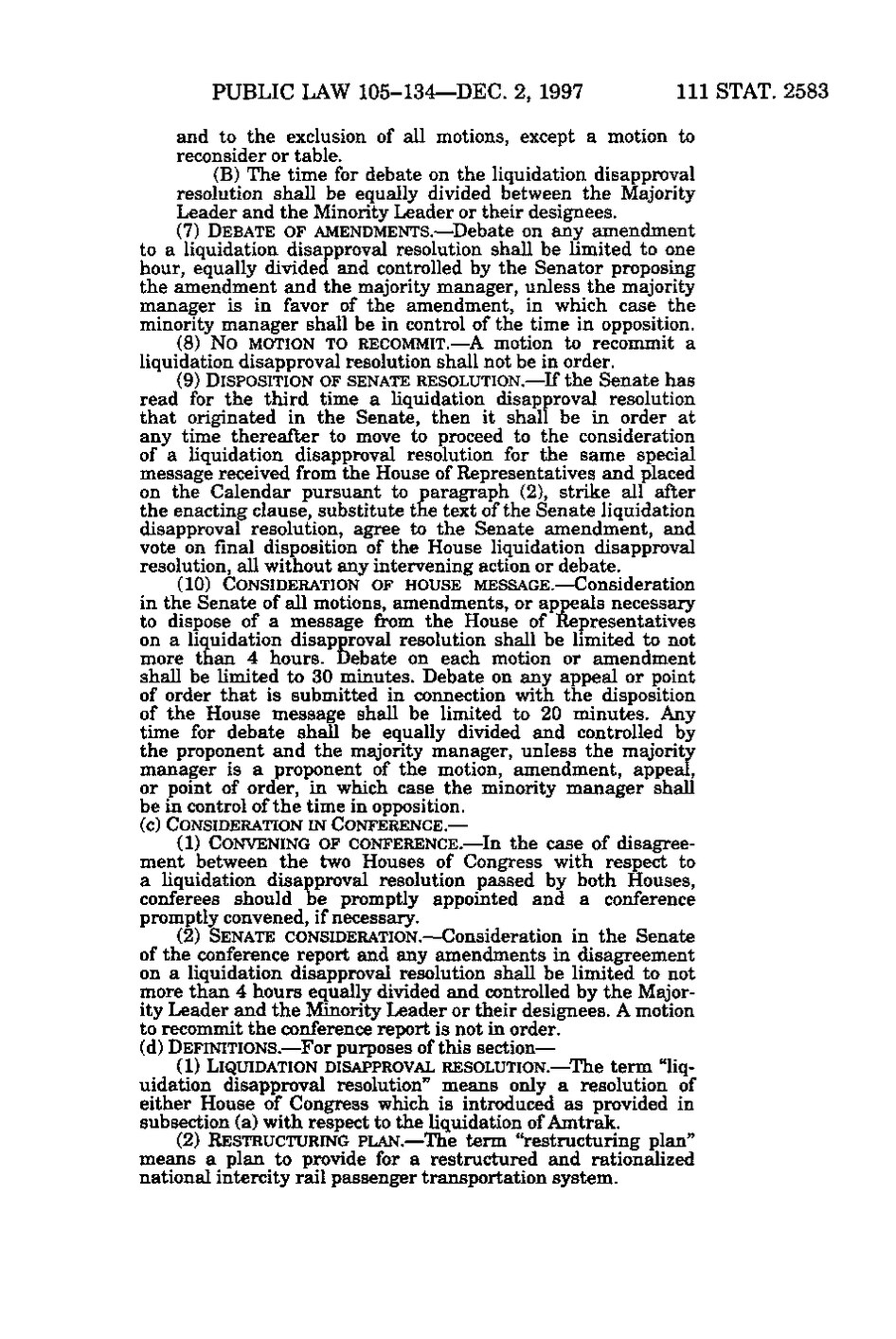PUBLIC LAW 105-134—DEC. 2, 1997 111 STAT. 2583 and to the exclusion of all motions, except a motion to reconsider or table. (B) The time for debate on the liquidation disapproval resolution shall be equally divided between the Majority Leader and the Minority Leader or their designees. (7) DEBATE OF AMENDMENTS.— Debate on any amendment to a liquidation disapproval resolution shall be limited to one hour, equally divided and controlled by the Senator proposing the amendment and the majority manager, unless the majority manager is in favor of the amendment, in which case the minority manager shall be in control of the time in opposition. (8) No MOTION TO RECOMMIT. —^A motion to recommit a liquidation disapproval resolution shall not be in order. (9) DISPOSITION OF SENATE RESOLUTION. — If the Senate has read for the third time a liquidation disapproval resolution that originated in the Senate, then it shall be in order at any time thereafter to move to proceed to the consideration of a liquidation disapproval resolution for the same special message received from the House of Representatives and placed on the Calendar pursuant to paragraph (2), strike all after the enacting clause, substitute the text of the Senate liquidation disapproval resolution, agree to the Senate amendment, and vote on final disposition of the House liquidation disapproval resolution, all without any intervening action or debate. (10) CONSIDERATION OF HOUSE MESSAGE. —Consideration in the Senate of all motions, amendments, or appeals necessary to dispose of a message from the House of Representatives on a liquidation disapproval resolution shall be limited to not more than 4 hours. Debate on each motion or amendment shall be limited to 30 minutes. Debate on any appeal or point of order that is submitted in connection with the disposition of the House message shall be limited to 20 minutes. Any time for debate shall be equally divided and controlled by the proponent and the majority manager, unless the majority manager is a proponent of the motion, amendment, appeal, or point of order, in which case the minority manager shall be in control of the time in opposition. (c) CONSIDERATION IN CONFERENCE.— (1) CONVENING OF CONFERENCE.—In the case of disagreement between the two Houses of Congress with respect to a liquidation disapproval resolution passed by both Houses, conferees should be promptly appointed and a conference promptly convened, if necessary. (2) SENATE CONSIDERATION. —Consideration in the Senate of the conference report and any amendments in disagreement on a liquidation disapproval resolution shall be limited to not more than 4 hours equally divided and controlled by the Majority Leader and the Minority Leader or their designees. A motion to recommit the conference report is not in order. (d) DEFINITIONS.— For purposes of this section— (1) LIQUIDATION DISAPPROVAL RESOLUTION.— The term "liquidation disapproval resolution" means only a resolution of either House of Congress which is introduced as provided in subsection (a) with respect to the liquidation of Amtrak. (2) RESTRUCTURING PLAN. — The term "restructuring plan" means a plan to provide for a restructured and rationalized national intercity rail passenger transportation system.
�
